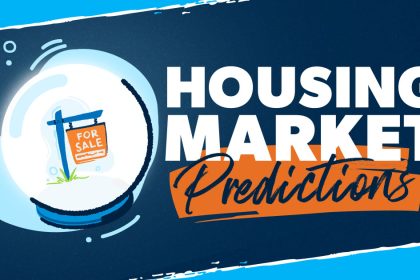The U.S. Small Business Administration offers a few different real estate loans to help business owners purchase, renovate, and build properties that support their companies. There are two primary SBA commercial real estate loans to choose from: the 7(a) loan and the 504 loan. Each one is designed for different purposes and has its own terms and eligibility requirements. Read about both options so you can pick the right one for your small business.
| 7(a) loan | 504 loan | |
| Uses | Purchasing, leasing, building, or improving a building or land | Purchasing, building, or improving a new or existing building, land, utilities, or landscaping |
| Loan amount | Up to $5 million | Up to $5.5 million |
| Repayment period | Up to 25 years | Up to 25 years |
| Owner-occupancy requirements | Existing real estate: 51% New construction: 60% |
Existing real estate: 51% New construction: 60% |
SBA 7(a) loans.
SBA 7(a) loans are a versatile source of funding for small business owners that can be used for real estate. Here’s how they work.
Eligibility
For-profit companies that meet the SBA’s definition of “small business” may apply for a 7(a) loan. In addition to demonstrating the need for financing, the owners must be financially invested in their companies and have tapped into other resources before applying—including their personal assets.
When using an SBA 7(a) loan for real estate, you must meet the following occupancy requirements, depending on the loan purpose:
- Existing real estate purchase: Property must be at least 51% owner-occupied
- New real estate construction: Property must be at least 60% owner-occupied
Use of loan funds.
SBA 7(a) loans can be used for a variety of reasons, such as working capital, inventory, and debt refinancing. For real estate-related financing, you can apply to use the funds for any of the following:
- Purchasing or leasing land
- Improving street or parking
- Purchasing, building, or improving a building
Repayment terms
Small businesses may borrow up to $5 million with a 7(a) loan, with payments spread out over up to 25 years. Interest rates are based on the current prime rate, plus an additional percentage ranging from 2.75% to 4.75%. You’ll also need to make a down payment, which is set by your lender in your loan offer. This ensures you have a vested interest in keeping up with your loan payments over time.
SBA 504 loans.
504 loans from the SBA are designed to help with large asset purchases, including real estate. It has a few key differences when compared to a 7(a) loan.
Eligibility
Small businesses can apply for the 504 loan if the business has a tangible net worth of under $15 million and has had an average net income of under $5 million (after federal taxes) for the previous two years.
The 504 loan comes with the same owner-occupancy requirements as the 7(a) loan: existing real estate purchases must be at least 51% owner-occupied, while new construction must be at least 60% owner-occupied.
Use of loan funds.
504 loans can be used for purchases, construction, or improvement projects. Eligible projects include:
- Purchasing existing buildings or land
- Purchasing or building new facilities
- Improving or modernizing existing facilities, land, streets, utilities, parking lots, and landscaping
Repayment terms
With a 504 loan, you can borrow up to $5 million for most purchases, or up to $5.5 million for eligible energy efficient or manufacturing projects. These real estate loans come with a 25-year repayment term. Interest rates are tied to the five-year and 10-year U.S. Treasury issues, with a pegged rate above the current rate.
The business owner is typically responsible for 10% of the costs as a down payment. Another 40% is borrowed from a Certified Development Company (CDC), and the remaining 50% is borrowed from a bank or credit union.
SBA 7(a) vs. 504 loans.
Both the SBA 7(a) and 504 loans can be used for real estate, however each has its own different perks and drawbacks. While the SBA 7(a) program offers broader versatility in how funds can be utilized without necessitating specific job creation or community development criteria, the SBA 504 loan program may provide advantages such as the possibility for greater loan amounts and more favorable interest rates.
See a full comparison between the two loan types here.
| SBA 7(a) loan | SBA 504 loan | |
| Loan amounts | Up to $5 million | Up to $5 million or up to $5.5 million for small manufacturers or certain energy projects |
| Loan uses | Working capital, inventory, real estate, equipment, debt refinancing, and more | Real estate purchase, lease, renovation, or improvement, property renovation, construction, equipment financing |
| Interest rate | Fixed or variable interest rate | Fixed interest rate |
| Repayment terms | 0 years for working capital and equipment, 25 years for real estate | 10, 20, or 25 years |
| Down payment | Varies | Typically 10%, but higher for startups or specific use properties |
| Collateral | Collateral required for loans over $25,000 | Assets being financed act as collateral |
| Fees | SBA guarantee fees and bank fees | SBA guarantee fees, bank fees, CDC fees |
| Eligibility | Meet the SBA’s definition of “small business” Be a for-profit U.S. business Prove you’ve invested your own money in the business and explored other financing options A personal guarantee signed by anyone who owns more than 20% |
Be a for-profit U.S. business Prove a business net worth of $15 million or less, and average net income of $5 million or less Meet job creation and retention goals or other public policy goals A personal guarantee signed by anyone who owns more than 20% |
Which SBA real estate loan option is right for your business?
Choosing between the SBA 7(a) and 504 loan programs for real estate purposes depends on several factors unique to your business needs and objectives:
- Type of real estate purchase: If you’re looking to purchase or refinance owner-occupied commercial property, the 504 loan offers benefits specifically tailored for real estate projects. However, if the property acquisition is part of a broader business financing need, the 7(a) might be more appropriate.
- Project size and scope: For larger projects that significantly contribute to local economic development, the 504 program is designed to support major investments in real estate and equipment. Smaller or more general real estate needs may be better suited to the 7(a) program.
- Loan terms and interest rates: The 504 loan program typically offers lower interest rates and longer repayment terms, especially for real estate purchases, making it a cost-effective option for substantial long-term investments. Consider your business’s capacity for repayment when choosing.
- Down payment requirements: The down payment for a 504 loan is usually lower than that of the 7(a), making it more accessible for small businesses with limited upfront capital but solid growth potential.
- Economic development and job creation: If your project will contribute to job creation or meet specific public policy goals, the 504 loan provides not just funding but also potential community development benefits, which could influence your decision.
Evaluating your business’s financial needs, growth projections, and the specific requirements of each loan program will help you make an informed decision about which SBA real estate loan option is right for you.
How to qualify for an SBA real estate loan.
Qualifying for an SBA real estate loan involves several key steps and criteria that potential borrowers must meet to be eligible for financing. Whether you’re considering a 7(a) or a 504 loan, the basic qualifications include:
- Business size and type: Your business must meet the SBA’s size standards, which vary by industry. Generally, it should be a for-profit enterprise and operate within the United States.
- Creditworthiness: Applicants should have good credit scores and a history of financial responsibility, both personally and in business. The SBA and lenders will review your credit history, including your business credit report and personal credit score.
- Down payment: While down payment requirements can be more favorable for SBA loans compared to conventional loans, borrowers should be prepared to make a down payment. The specific amount varies, with 504 loans typically requiring at least 10%.
- Operator requirement: For most real estate loans, the SBA requires that the business occupies at least 51% of the property for existing buildings or 60% for new constructions.
- Financial statements: Applicants must provide comprehensive financial statements, demonstrating the business’s profitability and sustainability. This includes balance sheets, income statements, and cash flow projections.
- Business plan: A detailed business plan must be submitted, outlining the business’s objectives, market analysis, management team, and how the loan will be used to support growth and stability.
- Collateral: Although the SBA offers a guaranty on the loan, borrowers are still required to provide collateral, which can include business assets, real estate, and personal guarantees.
Meeting these qualifications does not guarantee loan approval, but it is the first step in the application process. It’s essential to work closely with an SBA-approved lender or a Certified Development Company (CDC) for 504 loans, who can provide guidance tailored to your business’s unique needs and help you prepare a strong loan application.
How to apply for an SBA real estate loan.
Applying for an SBA real estate loan is a comprehensive process that requires careful planning and preparation. Here’s a step-by-step guide to navigating the application process effectively:
- Determine eligibility: Before applying, ensure your business meets the SBA’s eligibility requirements for either the 7(a) or 504 loan program. This includes size standards, the nature of the business, and creditworthiness.
- Choose the right program: Based on your business needs, decide whether the 7(a) or 504 loan program is more suitable for your real estate project. Consider factors such as the type of real estate, project size, and interest rates.
- Find an SBA-approved lender or CDC: For a 7(a) loan, you’ll need to work with an SBA-approved lender. For a 504 loan, you’ll partner with a Certified Development Company (CDC) alongside a third-party lender. Consult the SBA’s website or contact your local SBA office to find approved partners.
- Prepare your documentation: Gather all required documents, including financial statements, a business plan, ownership and affiliate business information, and any necessary legal documents related to your business and the real estate transaction.
- Complete the application: Fill out the loan application forms provided by your lender or CDC. Make sure to complete every section accurately to avoid delays in processing.
- Undergo a loan review: After you submit your application, your lender or CDC will review your documents and may request additional information. This review process will assess your project’s viability, creditworthiness, and adherence to SBA requirements.
- Loan approval: If your application is successful, you will receive a loan approval decision from your lender or CDC. This phase includes discussions on terms, rates, and any closing conditions that must be met.
- Closing: Once all conditions for the loan are fulfilled and approved, you will proceed to closing, where the loan documents are signed, and the funds become available for use according to the terms of the loan.
Remember, each SBA real estate loan application is unique, and the process may vary slightly depending on the lender, CDC, and specific circumstances of your business and real estate project. It’s advisable to seek guidance from financial advisors or consultants experienced with SBA loans to ensure a smooth application process.
Learn more about how SBA loans can help you grow your business and increase your efficiency.
FAQs
An SBA Express loan helps small business owners access financing more quickly by using an SBA-approved lender. You can use an Express loan or line of credit towards real estate purchases. Just note that the maximum financing amount is just $500,000, compared to a $5-million maximum with the 7(a) and 504 loan programs.
Although SBA 7(a) and 504 loans can be used for commercial real estate, the properties must be commercial and majority owner-occupied. That means you cannot purchase apartment buildings or other residential units with SBA loans. And if you’re purchasing office space, your company must occupy at least 51% of the space (and more if you’re purchasing new construction).
Quickly compare loan offers from multiple lenders.
Applying is free and won’t impact your credit.
Information provided on this blog is for educational purposes only, and is not intended to be business, legal, tax, or accounting advice. The views and opinions expressed in this blog are those of the authors and do not necessarily reflect the official policy or position of Lendio. While Lendio strives to keep its content up-to-date, it is only accurate as of the date posted. Offers or trends may expire, or may no longer be relevant.
Read the full article here

















